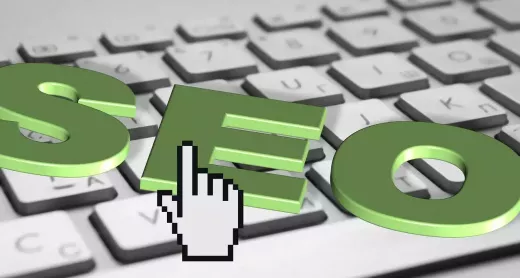Why is a Professional Email Template Important?
A professional email template is crucial for any business that wants to make a great impression on its subscribers. A well-designed template can help you stand out in a crowded inbox and increase the chances of your email being opened and read. It can also help you establish your brand identity and create a consistent look and feel across all your email communications.
A professionally designed email template can also help you achieve your marketing goals by making it easy for readers to take the desired action. Whether you want them to visit your website, make a purchase, or sign up for a newsletter, a well-designed email template can help you achieve your goals by directing readers to take the desired action.
In short, a professional email template is essential for any business that wants to make a great impression on its subscribers, establish its brand identity, and achieve its marketing goals.
Understanding the Components of an Email Template
Before you start designing your email template, it's essential to understand the various components that make up an email. These include the header, body, and footer. Each of these components serves a specific purpose and plays a crucial role in the overall effectiveness of your email.
The header is the top section of your email and typically includes your logo, company name, and navigation links. The purpose of the header is to establish your brand identity and provide readers with easy access to your website and other resources.
The body is the main section of your email and typically includes your message, images, and calls to action. The purpose of the body is to deliver your message and encourage readers to take the desired action.
The footer is the bottom section of your email and typically includes your contact information, social media links, and unsubscribe button. The purpose of the footer is to provide readers with additional information and options and ensure that your email complies with spam laws.
Understanding these components and their purpose is essential for creating a professional email template that effectively communicates your message and achieves your goals.
Choosing the Right Color Scheme and Fonts
When it comes to designing an email template, choosing the right color scheme and fonts is crucial. The colors and fonts you choose can help establish your brand identity and create a consistent look and feel across all your email communications.
When selecting colors for your email template, it's essential to consider your brand colors and choose complementary colors that work well together. You may also want to consider the psychology of color and how different colors can affect the emotions and actions of your readers.
When selecting fonts for your email template, it's important to choose fonts that are easy to read and consistent with your brand identity. You may want to consider using a combination of serif and sans-serif fonts to create a visually interesting and easy-to-read design.
Overall, the key to choosing the right color scheme and fonts is to ensure that they work well together and effectively communicate your brand identity and message.
How to Create a Visually Appealing Header
The header of your email template is the first thing readers will see, so it's essential to make it visually appealing and effectively communicate your brand identity. Here are some tips for creating a visually appealing header:
- Use your logo or a high quality image that represents your brand
- Choose a font that is consistent with your brand identity and easy to read
- Include navigation links that make it easy for readers to access your website and other resources
- Create a visually interesting header by using colors, shapes, and textures that complement your brand identity
By following these tips, you can create a visually appealing header that effectively communicates your brand identity and encourages readers to engage with your email.
Designing a Clear and Concise Body Section
The body section of your email template is where you deliver your message and encourage readers to take the desired action. To create an effective body section, it's essential to keep it clear, concise, and easy to read. Here are some tips for designing a clear and concise body section:
- Use short paragraphs and bullet points to make your content easy to scan
- Use a font that is easy to read and consistent with your brand identity
- Include images and graphics that complement your message and help break up text
- Use a clear and concise call to action that tells readers what you want them to do
By following these tips, you can create a body section that effectively delivers your message and encourages readers to take the desired action.
Adding Images and Graphics to Your Email Template
Images and graphics can help make your email template more visually appealing and engaging. When adding images and graphics to your email template, it's essential to choose high-quality images that are consistent with your brand identity and effectively communicate your message.
Here are some tips for adding images and graphics to your email template:
- Choose high-quality images that are relevant to your message
- Use alt text to describe your images for readers who can't see them
- Optimize your images for faster loading times
- Use graphics and icons to break up text and make your email more visually interesting
By following these tips, you can effectively use images and graphics to make your email template more visually appealing and engaging.
Optimizing Your Email Template for Mobile Devices
With more and more people accessing emails on their mobile devices, it's essential to optimize your email template for mobile viewing. Here are some tips for optimizing your email template for mobile devices:
- Use a responsive design that adjusts to different screen sizes
- Use a font size that is easy to read on small screens
- Use a single-column layout to make it easier to read on small screens
- Use high-quality images that load quickly on mobile devices
By following these tips, you can ensure that your email template is optimized for mobile devices and effectively reaches your mobile audience.
Testing and Fine-Tuning Your Email Template
Once you've designed your email template, it's essential to test it thoroughly to ensure that it looks great and functions properly across all devices and email clients. Here are some tips for testing and fine-tuning your email template:
- Test your email template on various devices, browsers, and email clients
- Send test emails to yourself and colleagues to ensure that everything looks and functions as intended
- Use an email testing tool to identify and fix any issues - Continuously monitor and fine-tune your email template to ensure that it remains effective and up-to-date
By following these tips, you can ensure that your email template looks great and functions properly, delivering the desired results.
Best Practices for Using Email Templates
To get the most out of your email template, it's essential to follow best practices for using email templates. Here are some best practices to keep in mind:
- Use a consistent layout and design across all your email communications
- Personalize your emails with recipient names and other relevant information
- Use segmentation and targeting to deliver relevant content to the right audience
- Use A/B testing to identify the most effective subject lines, content, and calls to action
By following these best practices, you can effectively use email templates to engage your audience and achieve your marketing goals.










